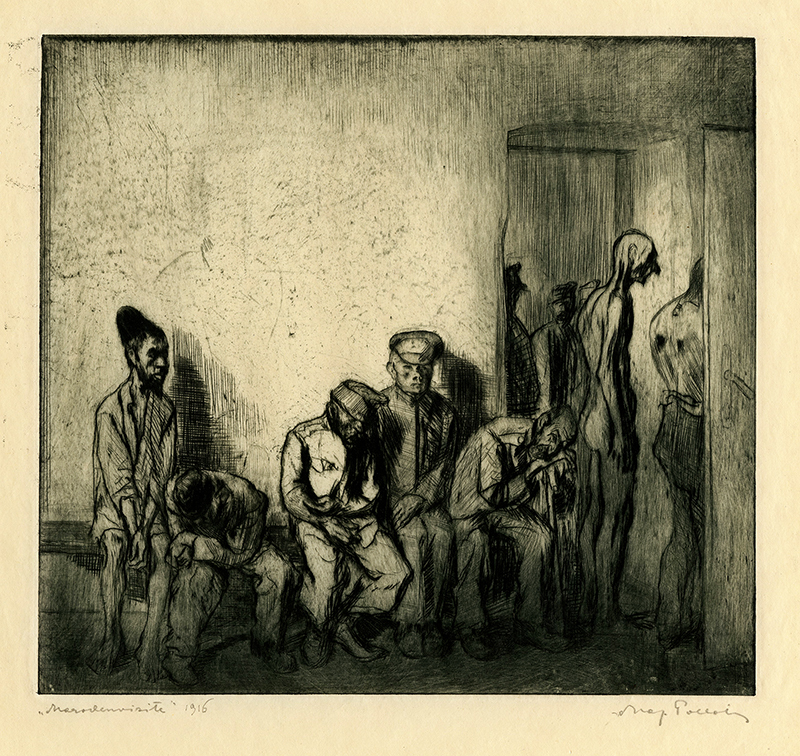
19th, 20th & 21st Century Fine Prints
707-546-7352 · fax 707-546-7924 · web: www.annexgalleries.com · email: artannex@aol.com
"Marodenvisite" (Sick call) by Max Pollak

"Marodenvisite" (Sick call)
Max Pollak
"Marodenvisite" (Sick call)
Max Pollak
1886 - 1970 (biography)An alternative title to this piece, included on other impressions, is "Sick Call in the Austrian Army Hospital". It precedes his portfolio of wartime images titled "Refugee Camp, Nikolsburg".
A row of men from various walks of lift wait, seated on a bench or standing in line, all are in some degree of distress, one has already shed his clothes as he prepares to see the medical staff. In 1916 and 1917 what was then dubbed "purulent bronchitis", started occurring in military camps. This outbreak later morphed into the worldwide pandemic known as the "Spanish Flu".
This first wave of the pandemic infected millions but claimed relatively few lives and was most noted for the disruption of everyday activities which it caused among troops and civilians alike and for the fact that such disruptions in neutral Spain (where no censorship of the press was in force) were widely reported in the world's media, earning it the mistaken tag of "Spanish Flu".
In 1918 it mutated into the H1N1 virus which created the deadly second wave of what was now known as the Spanish flu, which first made its transformed presence known late in August 1918 in Freetown, Sierra Leone; Brest, France; and Boston, USA, three major wartime ports through which hundreds of thousands of soldiers and sailors had been streaming since the first wave of the pandemic had broken out earlier in the year.
The fact that over half of the world's population had been infected by this runaway H1N1 virus meant that those who survived probably gained a broad immunity to it, at least temporarily. Thus, when, in the first half of 1919, the virus resurfaced in a slightly altered form as a third global wave of Spanish flu, against the background of the movement of post-war refugees, soldiers being repatriated and peacetime commerce resuming, its capacity to infect and kill was diminished.
It is estimated that between 50 to 100 million people died worldwide during the three episodes.
